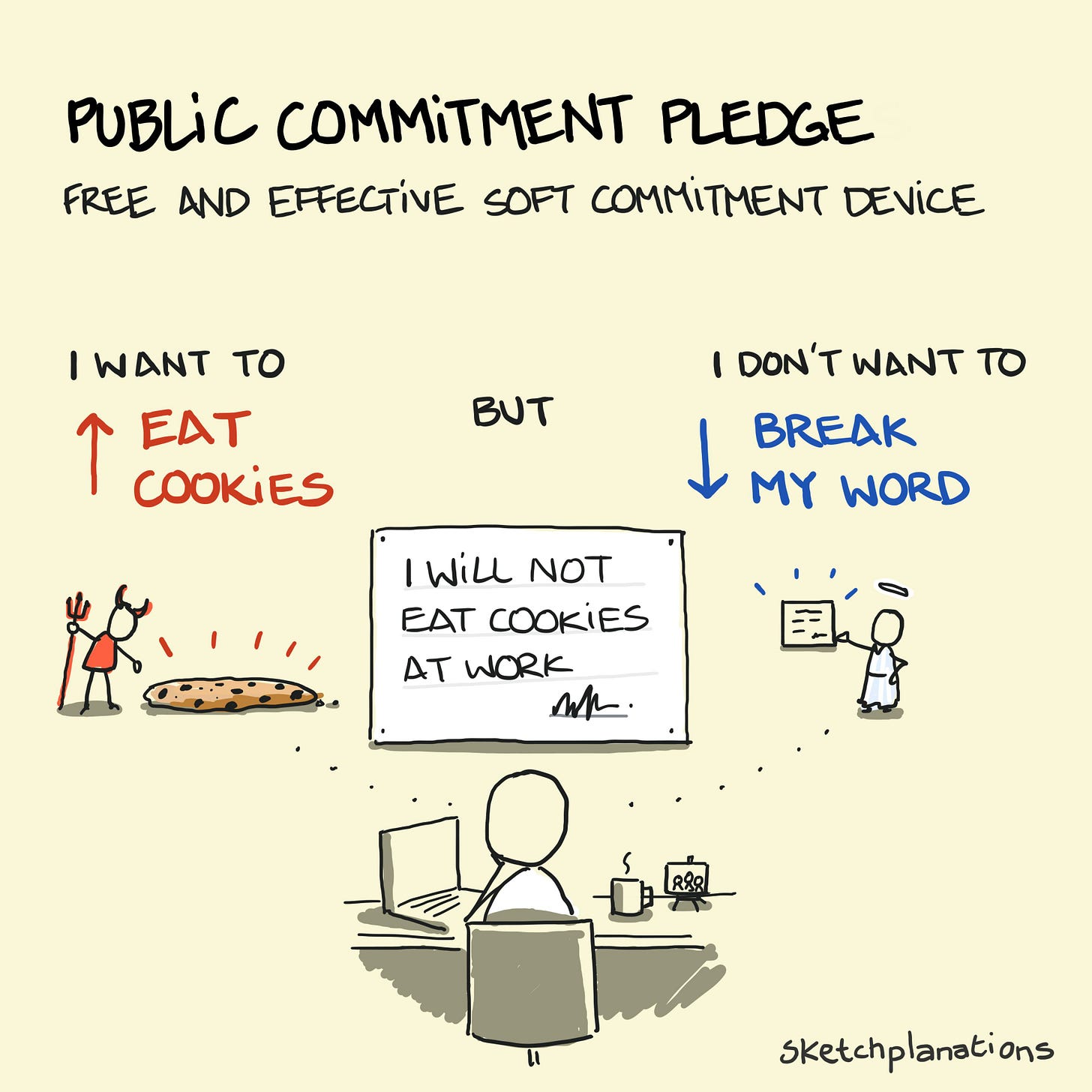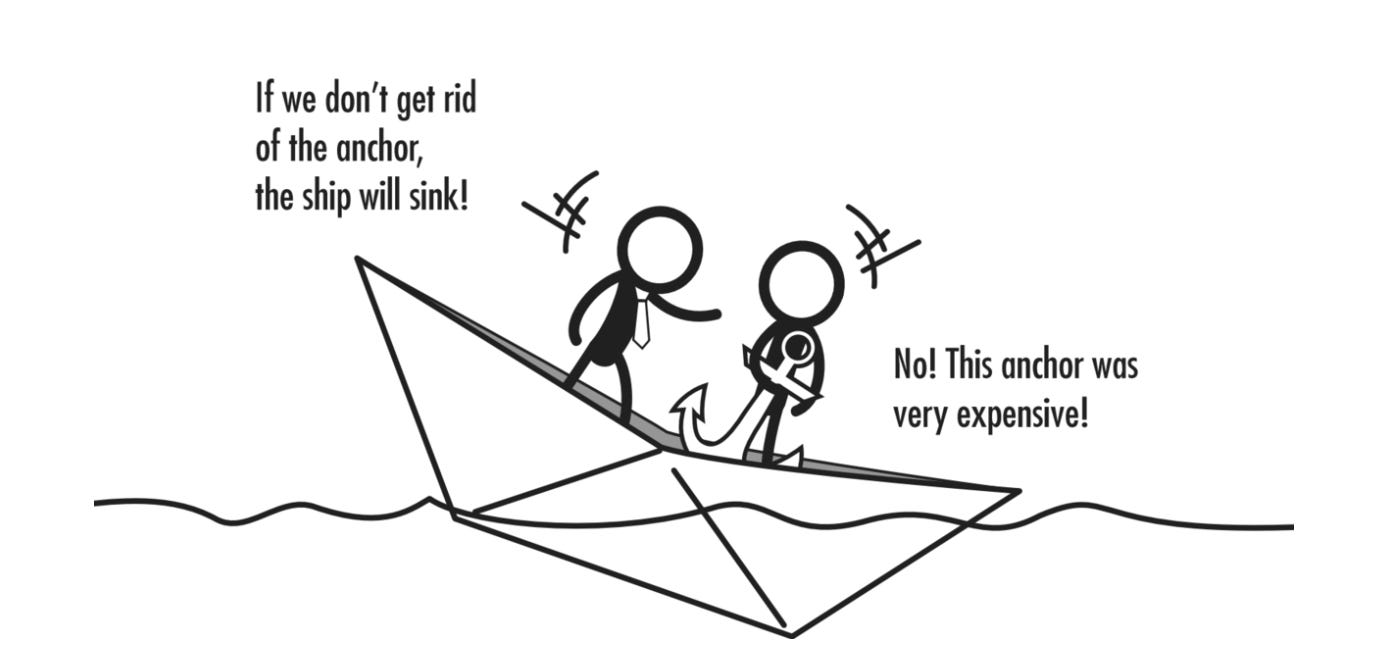The Power of Commitment and Consistency: How Small Steps Lead to Big Conversions
Harness the Power of Commitment and Consistency to Influence Consumer Behavior and Everyday Choices
Picture this: It's January 1st, and Sarah, a busy professional, decides this is the year she'll get fit.
She signs up for a gym membership, buys new workout clothes, and tells all her friends about her resolution.
Fast forward to February, and despite her waning enthusiasm, Sarah finds herself still going to the gym.
Why?
The answer lies in a fascinating psychological principle that not only shapes personal decisions but also drives consumer behavior.
The Psychological Pull of Consistency
Have you ever wondered why people stick to decisions even when they know better?
This phenomenon is at the heart of one of the most powerful principles in consumer psychology: Commitment and Consistency. Introduced by renowned psychologist Robert Cialdini, this principle explains why Sarah kept going to the gym and why your customers might stick with your brand, even when faced with numerous alternatives.
But what exactly is Commitment and Consistency, and how can it transform your marketing strategy?
Unlocking the Power of Small Commitments
Imagine you're at a bustling farmers market. A vendor offers you a free sample of artisanal cheese.
You try it, enjoy it, and suddenly find yourself buying a whole wheel.
This isn't just good salesmanship; it's the Commitment and Consistency principle in action.
This principle states that people have a strong desire to appear consistent in their actions and beliefs.
Once they make a commitment, especially publicly, they are more likely to follow through with it.
That small act of accepting the cheese sample created a tiny commitment, which then led to a larger action – the purchase.
For marketers, this principle is pure gold. By encouraging small, seemingly insignificant commitments, you can pave the way for larger, more significant actions from your customers.
From Free Trials to Loyal Customers: A Marketing Journey
Let's follow the journey of Alex, a potential customer for a productivity app:
Alex sees an ad offering a free e-book on time management. Intrigued, he provides his email to download it. (Small commitment)
Over the next few weeks, Alex receives helpful productivity tips via email. He finds himself opening these emails regularly. (Consistent engagement)
The app offers a 7-day free trial. Already valuing the tips he's received, Alex signs up. (Increased commitment)
After the trial, Alex is hesitant to lose access to the features he's been using. He subscribes to the paid version. (Major conversion)
Months later, when asked about productivity tools, Alex enthusiastically recommends the app to his colleagues. (Brand advocacy)
This journey illustrates how small, consistent steps can lead to significant outcomes. But how can you apply this to your business?
Crafting Your Commitment Strategy: 3 Powerful Tactics
Create Low-Barrier Entry Points: Start by offering easy ways for potential customers to engage with your brand. This could be providing free resources like webinars, downloadable guides, or mini-courses. Remember, the goal is to get that initial "yes."
Use Consistent, Affirmative Messaging: Once a customer has taken that initial step, reinforce their decision and encourage further engagement. Use language that affirms their choice and identity:
"As someone committed to personal growth, you'll love our latest feature..."
"You've already taken the first step towards success. Ready for the next level?"
Showcase the Journey of Consistency: Share stories of customers who started with small commitments and are now loyal brand advocates. This not only provides social proof but also shows the path of consistency that led to their satisfaction.
Protecting Yourself: The Flip Side of Commitment and Consistency
While the principle of Commitment and Consistency can be a powerful tool for businesses, it's equally important for consumers to understand how to protect themselves from potential manipulation. After all, not every company will use these tactics ethically.
Recognizing the Tactics
The Foot-in-the-Door Technique: Be aware when you're asked for small commitments that could lead to larger ones. That free trial or small purchase might be the first step towards a bigger ask.
Public Commitments: Companies may encourage you to share your goals or purchases publicly. While this can be motivating, it also creates pressure to follow through, even if circumstances change.
Sunk Cost Fallacy: This is the tendency to continue an endeavor because you've already invested time, effort, or money, even when it's no longer in your best interest.
Defensive Strategies
Pause and Reflect: Before making any commitment, big or small, take a moment to consider if it aligns with your true goals and values. Ask yourself, "Would I make this decision if I hadn't already taken the previous steps?"
Set Clear Boundaries: Decide in advance what level of commitment you're comfortable with. This can help you resist pressure to escalate your involvement.
Re-evaluate Regularly: Just because you started something doesn't mean you have to continue. Regularly assess your commitments and don't be afraid to change course.
Be Wary of Time Pressure: Tactics that rush you into decisions often exploit the consistency principle. Take your time when making choices.
Practice Saying No: It's okay to decline further commitments, even if you've already taken initial steps. Remember, true consistency is about aligning with your values, not just your past actions.
The Ethical Use of Influence
As consumers become more aware of these psychological principles, businesses have a responsibility to use them ethically. Ethical application of the Commitment and Consistency principle should:
Provide genuine value at every step
Be transparent about the process and potential commitments
Allow easy opt-outs without guilt or pressure
Align with the customer's best interests
Your Next Step in the Consistency Journey
The principle of Commitment and Consistency is more than just a marketing tactic; it's a powerful tool for building lasting relationships with your customers. By understanding and applying this concept, you can create strategies that not only drive initial engagement but also foster long-term loyalty.
Now, it's your turn to take the first small step. Reflect on a time when you made a minor commitment that led to a significant decision. How did it impact your choices moving forward?
Remember, in the world of marketing and consumer psychology, awareness is key.
Whether you're applying these principles in your business or navigating them as a consumer, understanding the power of Commitment and Consistency can lead to more informed decisions and mutually beneficial relationships.








